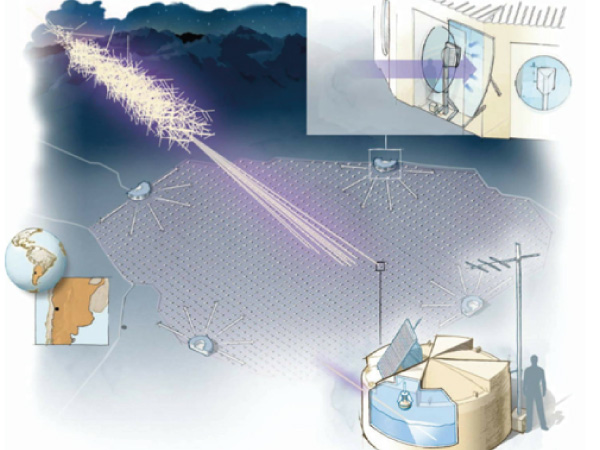Cosmic rays are very energetic particles produced inside and outside of our galaxy. In general, they can be protons, electrons, photons or heavy nuclei. They arrive at Earth from all directions and with energies from 100 MeV to above 1020 eV. Today, the understanding of the origin and properties of Ultra-High Energy Cosmic Rays – UHECR (those with energies above 1018 eV) are some of the issues to be investigated and resolved. To infer these characteristics it is necessary to study their propagation, their acceleration processes, their arrival direction distributions, and their mass composition. In this seminar I will present the history and evolution of cosmic ray research in the last century. Details and results of some of the experiments built to study Ultra-High Energy Cosmic Rays over the last fifty years will be presented and discussed. After that, I will introduce the Pierre Auger Observatory that is currently one of the most important and the biggest experiment in operation to research the characteristics of these very energetic particles. At the final part, some of the most recent results obtained by the Auger Observatory, related to energy spectrum and mass composition of UHECRs, will be briefly reviewed.
AGENDA YACHAY TECH

The Ultra-High Energy Cosmic Rays (UHECRs): some historical perspectives and some of the latest results.

Mary Diaz, Ph.D.
Cosmic rays are very energetic particles produced inside and outside of our galaxy. In general, they can be protons, electrons, photons or heavy nuclei. They arrive at Earth from all directions and with energies from 100 MeV to above 1020 eV. Today, the understanding of the origin and properties of Ultra-High Energy Cosmic Rays – UHECR (those with energies above 1018 eV) are some of the issues to be investigated and resolved. To infer these characteristics it is necessary to study their propagation, their acceleration processes, their arrival direction distributions, and their mass composition. In this seminar I will present the history and evolution of cosmic ray research in the last century. Details and results of some of the experiments built to study Ultra-High Energy Cosmic Rays over the last fifty years will be presented and discussed. After that, I will introduce the Pierre Auger Observatory that is currently one of the most important and the biggest experiment in operation to research the characteristics of these very energetic particles. At the final part, some of the most recent results obtained by the Auger Observatory, related to energy spectrum and mass composition of UHECRs, will be briefly reviewed.